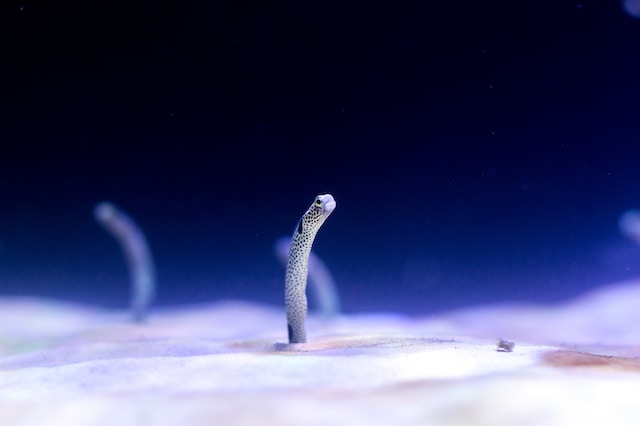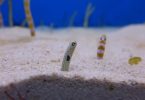Table of Contents
Best Ways to Get Rid of Tiny White Worms in a Fish Tank
Are you noticing tiny white worms wriggling around in your fish tank? Don’t panic, you’re not alone. These pesky creatures can be a common problem for fish keepers, but the good news is that they can be easily dealt with.
In this article, we will explore the causes of these worms, how to identify them, and most importantly, how to get rid of them. Whether you’re a seasoned aquarist or a beginner, read on to discover the best ways to get rid of tiny white worms in your fish tank.
There are several methods that can be used to get rid of these worms and prevent them from coming back. One way to get rid of tiny white worms in a fish tank is to clean the tank thoroughly.
This includes using a gravel vacuum to remove any debris or detritus that may be providing a food source for the worms. It is also important to check the filtration system for any issues and to make sure it is functioning properly.
Another method is to reduce the amount of food being given to the fish and to vacuum the substrate more often. Increasing oxygenation in the tank can also help to bring the nutrients in the aquarium system back to balance, which can cause the worms to disappear.
Identifying the Worms
When dealing with tiny white worms in a fish tank, it is important to first identify the type of worm. This will help in determining the best course of action for removing them.
Physical Characteristics
The most common types of white worms found in fish tanks are detritus worms and planaria. Detritus worms are small, white, and thread-like, measuring only a few millimeters in length. They are usually found in the substrate of the tank and feed on leftover food and waste.
Planaria, on the other hand, are flat and have a triangular head with two eye spots. They can grow up to 1 inch in length and are usually found crawling on the glass or substrate.
Behavior
Detritus worms are harmless to fish and plants and are usually an indication of overfeeding or poor tank maintenance. They can multiply quickly if there is an abundance of food available.
Planaria, on the other hand, can be harmful to fish and may even prey on smaller fish or shrimp. They are usually an indication of poor water quality or overfeeding.
In conclusion, identifying the type of tiny white worm in a fish tank is crucial in determining the best course of action for removing them.
Detritus worms are harmless and can be easily removed by improving tank maintenance, while planaria may require more drastic measures such as medication or manual removal.
Causes of Worm Infestations
Worm infestations in a fish tank can be caused by various factors, including overfeeding, poor water quality, and contaminated live food.
Understanding the causes of worm infestations can help fish tank owners prevent and address these issues.
Overfeeding
Overfeeding is one of the most common causes of worm infestations in a fish tank. When fish are fed too much food, the excess food can accumulate in the tank and contribute to poor water quality. Overfeeding can also lead to an increase in the number of worms in the tank, as they feed on the leftover food.
To prevent overfeeding, fish tank owners should feed their fish small amounts of food at regular intervals throughout the day. It is also important to remove any uneaten food from the tank after feeding.
Poor Water Quality
Poor water quality can also contribute to worm infestations in a fish tank. When the water in the tank is not properly filtered or changed, it can become contaminated with excess food, fish waste, and other debris. This can create an environment that is conducive to the growth of worms and other parasites.
To maintain good water quality, fish tank owners should regularly test the water in their tank and perform routine water changes.
They should also ensure that the tank is properly filtered and that any dead or decaying plant material or fish are promptly removed from the tank.
Contaminated Live Food
Another common cause of worm infestations in a fish tank is contaminated live food. Live food, such as brine shrimp and bloodworms, can be a great source of nutrition for fish. However, if the live food is not properly cleaned and prepared, it can introduce worms and other parasites into the tank.
To prevent contaminated live food from causing worm infestations, fish tank owners should purchase live food from a reputable supplier and ensure that it is properly cleaned and prepared before feeding it to their fish.
They should also avoid feeding their fish live food that has been sitting in the tank for an extended period of time, as this can also contribute to poor water quality and the growth of worms.
Preventing Worm Infestations
Preventing worm infestations in a fish tank is essential for the health and well-being of the fish. Here are some preventative measures that can be taken:
Maintaining Good Water Quality
Maintaining good water quality is crucial for preventing worm infestations. Poor water quality can lead to stress in fish, making them more susceptible to infections and parasites.
Regular water changes, proper filtration, and monitoring water parameters such as pH, ammonia, and nitrate levels can help maintain a healthy environment for fish.
Feeding the Right Amount
Overfeeding can lead to excess waste in the tank, which can create a breeding ground for worms and other parasites.
It is important to feed fish only the amount they can consume within a few minutes and to remove any uneaten food promptly. Feeding a varied diet of high-quality fish food can also help boost fish immunity and prevent worm infestations.
Quarantining New Fish and Live Food
New fish and live food can introduce worms and other parasites into a tank. Quarantining new fish for a few weeks before introducing them to the main tank can help prevent the spread of worms. Live food should also be purchased from a reputable source and quarantined before feeding to fish.
By following these preventative measures, fish owners can help prevent worm infestations in their tanks and ensure the health and well-being of their fish.
Treating Worm Infestations
If you notice tiny white worms in your fish tank, it’s important to take action quickly to prevent the infestation from spreading.
There are a few different methods for treating worm infestations, including removing worms manually and using chemical treatments.
Removing Worms Manually
One way to get rid of tiny white worms in a fish tank is to remove them manually. This method is particularly effective for small infestations. Here are the steps to follow:
- Use a gravel vacuum or siphon to remove as much of the worm-infested substrate as possible.
- Inspect the substrate carefully for any remaining worms and remove them by hand.
- Rinse the substrate thoroughly with clean water.
- Replace the substrate with fresh, clean substrate.
Using Chemical Treatments
If the infestation is severe or if manual removal isn’t effective, chemical treatments may be necessary. However, it’s important to use these treatments with caution, as they can harm fish and other aquatic life if not used properly. Here are a few chemical treatments that may be effective:
- Fenbendazole: This medication is available in powder form and can be added directly to the tank water. It’s effective against a wide range of parasites, including worms.
- Levamisole: This medication is also available in powder form and can be added to the tank water. It’s effective against a variety of worms and other parasites.
- Praziquantel: This medication is available in tablet form and can be added to the tank water. It’s effective against a variety of worms and other parasites.
Before using any chemical treatments, be sure to read the instructions carefully and follow them closely. It’s also a good idea to remove any live plants from the tank before treating it, as some treatments can harm plants.







